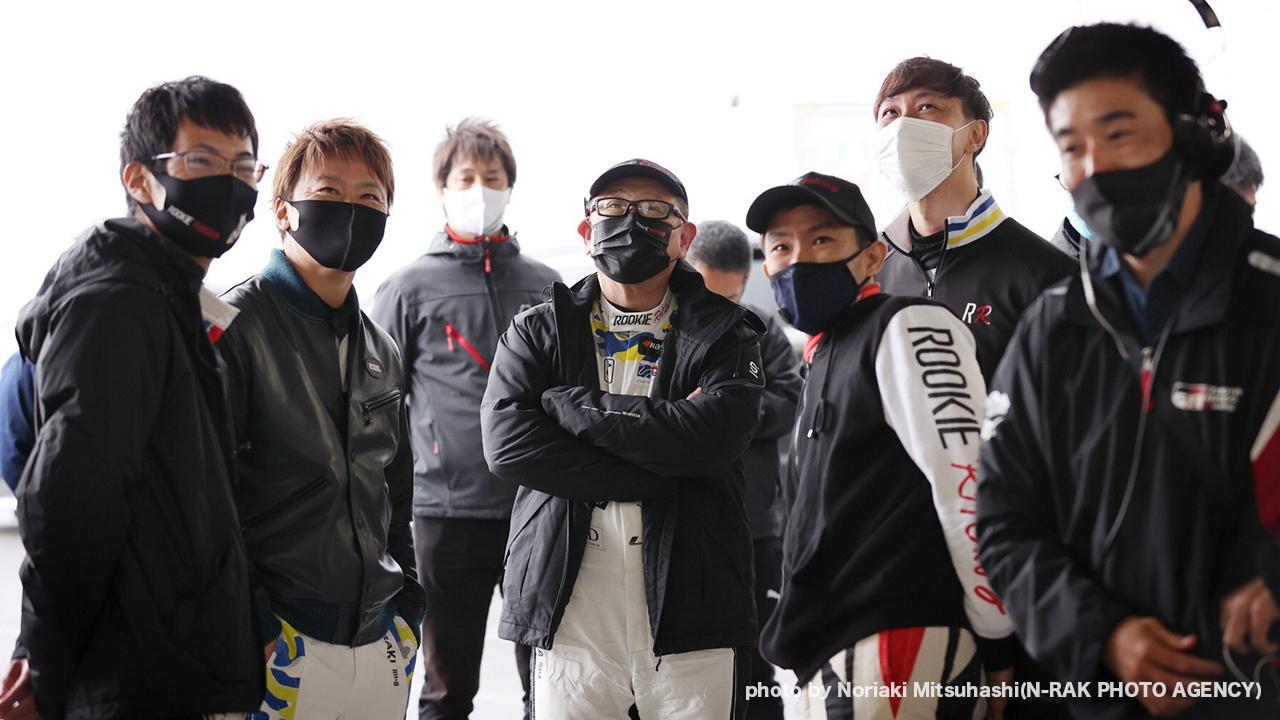
This series tracks the Toyota team as it prepares to take on a 24-hour race in a car powered by a hydrogen engine car. In this second part, the drivers talk about the car's performance and how it appeals to all senses.

The hydrogen-powered Corolla’s debut in a 24-hour race is almost upon us. In preparation, the car has already undergone three test sessions on the track.
The previous article gave some details of the engine and car, and in this article, we will share some of the impressions of the drivers behind the wheel of the hydrogen-powered vehicle.
Masahiro Sasaki – ‘A car that will leave gasoline-powered vehicles in its wake’
First up is Masahiro Sasaki, who has driven the 86 and GR Yaris for ROOKIE Racing alongside Morizo (President Akio Toyoda).
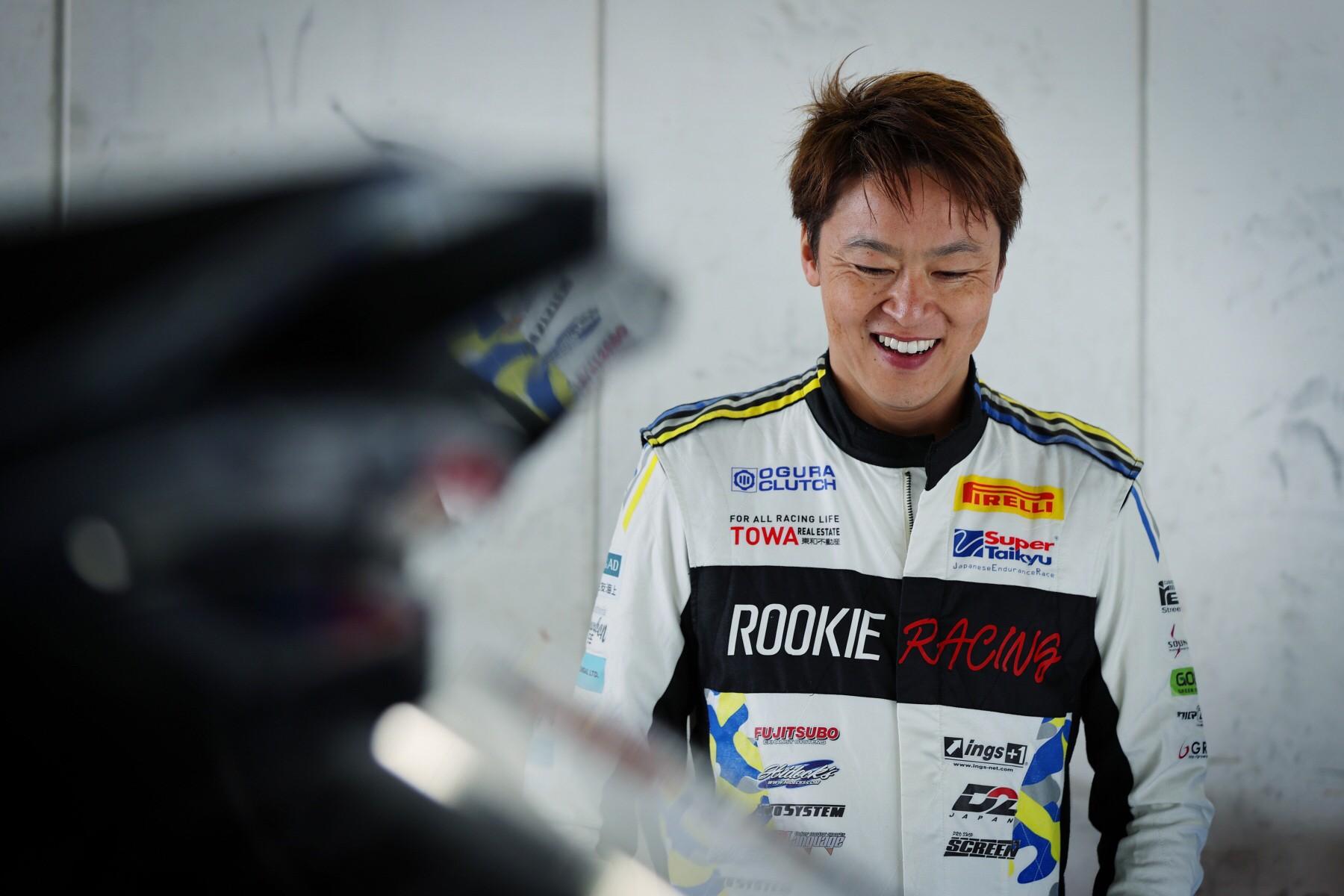
We started by asking him how he felt the car differed from traditional gasoline-powered engines.
Sasaki
I’ve driven the car since the shakedown, and they’ve got it running so smoothly that it doesn’t feel significantly different from a gasoline-engine-powered car in any way.
Right now, we’re still at the starting line. As the technology continues to get better, I hope we can take advantage of the unique features of hydrogen to make a more powerful car, closing the gap and ultimately leaving (gasoline-powered cars) in our wake.
The ignition speed is said to be six to eight times faster. So, if we can revise the programming to optimize this ignition speed and timing, I expect the engine to become more responsive and even more powerful.
Sasaki’s comments about hydrogen-powered engines overtaking their gasoline-powered rivals were particularly striking. More than merely a sign of his competitive nature, they demonstrate Sasaki’s belief that the technology still holds much potential.
Sasaki
This project has just begun and the engine is still very much in its infancy, getting ready to stand on its own two feet. I hope to see it stand firmly, then get to the point where it can run, sprint, and take off.
Although there is virtually no difference in the feel (of the engine), the torque tends to be rather low. I think this lack of torque can be overcome in the near future by effectively combining the engine with turbochargers or superchargers.
It is important to confirm the feelings we have as drivers by looking at the data, testing the car’s endurance through long runs, and continuing to develop the areas that are lacking. I think the speed of (technological) progress really picks up in a racing environment. I hope we can make use of racing to create a better car with a long future.
It has a powerful sound. Getting more power out of the engine should make the sound even more impressive, and I hope this is another aspect everyone can enjoy…
As a sport, I think racing is difficult for the general public to understand. Those with no interest in cars or racing probably wonder why on earth we would do something like this.
I want people to see that the car we drive is evolving, that it runs by emitting clean air and water vapor instead of carbon dioxide. I hope that our efforts will contribute to making more cars on the world’s roads carbon-neutral.
That day, Sasaki’s best lap time was 2:04. As the team’s choice for qualifying, Sasaki was determined to break the two-minute mark, but shaving four seconds off a lap is no easy task.
While racers are competitive by nature, there was another key reason why Sasaki was set on the sub-two-minute goal.
Sasaki
Going under two minutes would prove to the motorsports world that competing in this car is more than just an experiment. I want to show that the hydrogen-powered engine is not just a pipe dream, but a race-ready machine!
Since the qualifying stage of the endurance race is the car’s first chance to shine, two minutes won’t be good enough – I have to get down to the one-minute range!
When asked about the possibility of making that happen, Sasaki responded: “We have nowhere to go but up.”
Sasaki
Last time, the wind direction changed our speed by about 10km/h from the shakedown. This means that we still have much to do. We have really only just found our feet, so we have nowhere to go but up from here.
During shakedown, even a relaxed run clocked in around (2 minutes) 7 seconds, and with a bit of effort I soon got down to the 5-second range, so it was faster than I expected. At first, I thought we would be slower than cars in the lower class, but the car turned out much faster.
Takuto Iguchi – ‘Really feels like you’re racing’
Next to share his thoughts with us was Takuto Iguchi.
Iguchi has been driving the GR Yaris for ROOKIE Racing since last year, and often also rides for the Subaru team. He has participated in the 24-hour race at Germany’s Nürburgring as part of Toyota GAZOO Racing, and more recently with Subaru.
Subaru’s specialty lies in 4WDs, and it was a 4WD that Iguchi drove at Nürburgring. Just like the GR Yaris before it, the Corolla for this race is also a 4WD – as a 4x4 master, Iguchi is expected to play a key role on this team.
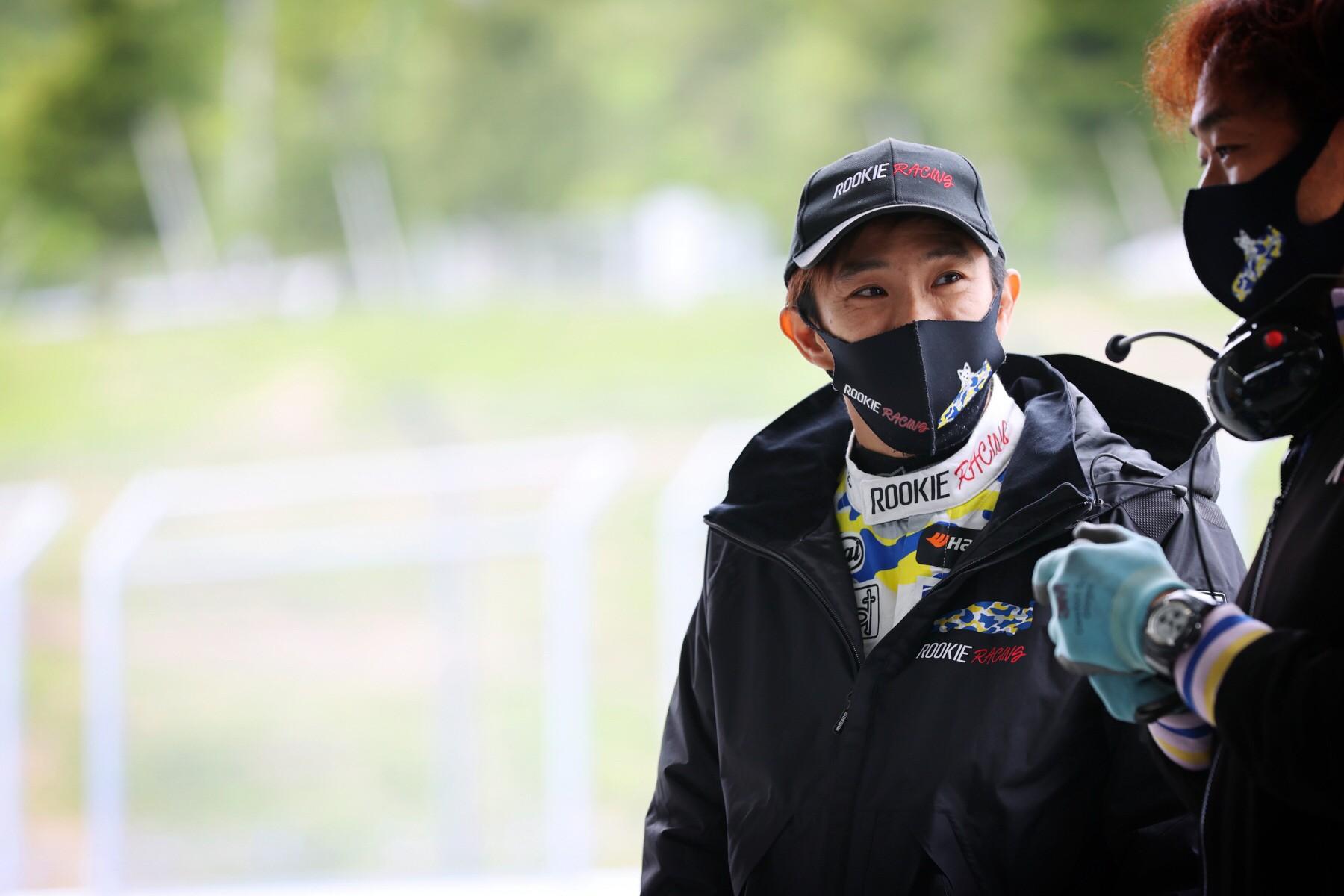
Q. How was the hydrogen-powered engine?
Iguchi
Until you’re told otherwise, it feels just like a regular engine – I felt comfortable driving it right away.
The car also comes to life nicely the moment you step on the accelerator, which makes me feel that, with continued improvement, it could have a really exciting future ahead.
From the sound of the engine to the sensation when you’re driving, all of that remains the same, so you really feel like you’re racing. I didn’t feel like I was driving a hydrogen-powered car.
I think we still have a lot of work to do with the settings, but at this stage the car is certainly fit for the circuit. From here, I’m sure we’ll come up against all sorts of issues, such as refueling time, but I’m sure we will overcome them as a team.
Hiroaki Ishiura – ‘Drives normally without any trouble’
Next up was Hiroaki Ishiura, another top driver who has been crowned season champion in Super Formula, Japan’s fastest race series. He also competes in Super GT, the most popular form of racing in Japan.
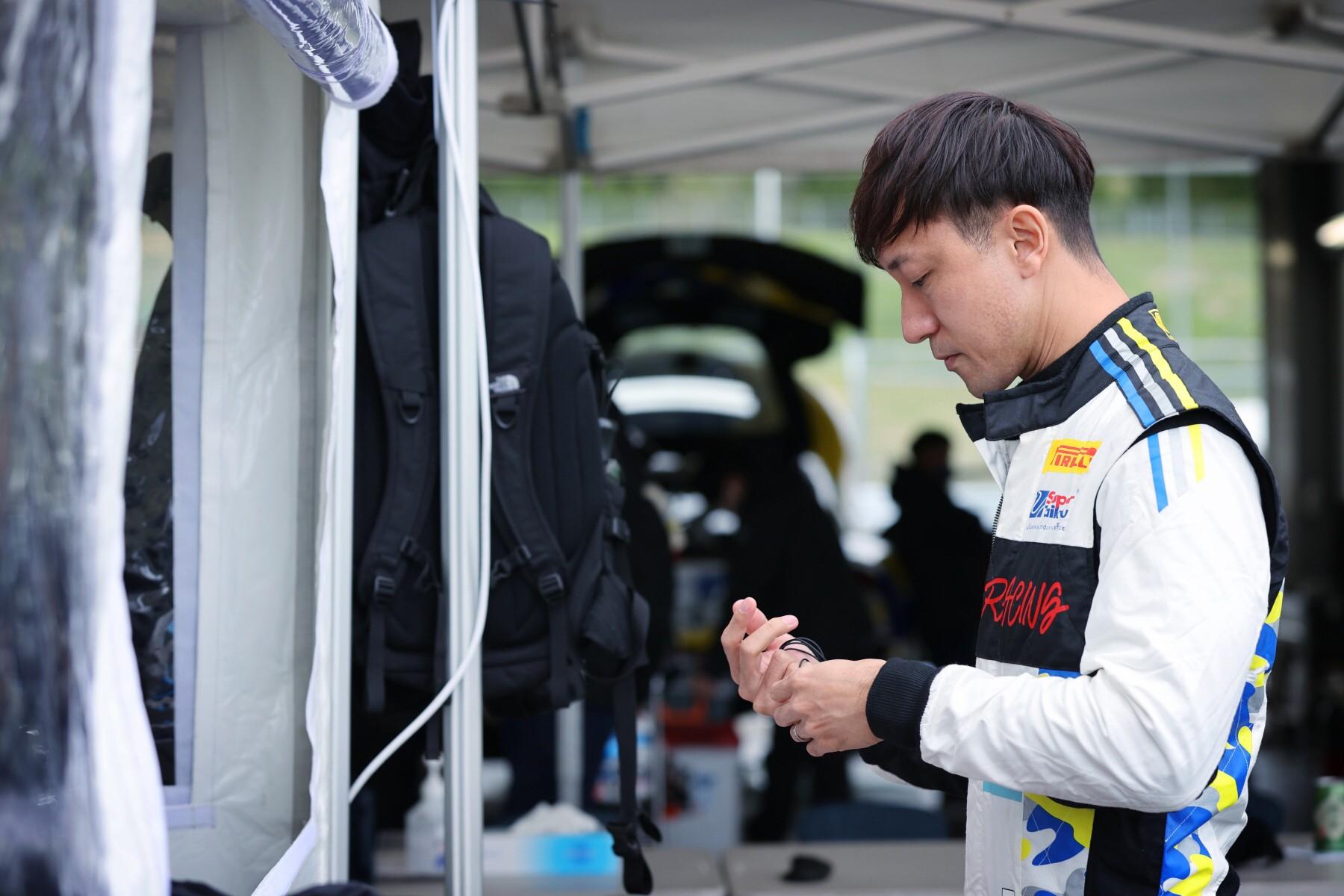
Q. How was the car to drive?
Ishiura
The biggest surprise was being able to drive normally without any trouble. Once I got behind the wheel, it felt no different from driving a regular gasoline-engine racing car – there were no new controls or anything else that would make it feel like you’re driving a completely different vehicle. Out on the track, you can forget about it and just concentrate on racing as usual. That’s what it felt like.
The car responds well when you tap on the accelerator, giving you more precise control. In that regard, I felt it was better than a gasoline engine.
However, because we haven’t reached max power yet, the acceleration that follows leaves a little to be desired when compared to a gasoline engine at full throttle. But this is just the beginning, and I think it’s a very exciting first step when you consider that we will continue to build from here.
Q. What about the sound?
Ishiura
I think it might sound better than a gasoline-powered car. It was not overly high-pitched at the top, and the underlying sound of the torque gives it a real impact when you’re driving.
As a racing fan, I’ve been going down to Fuji Speedway from a young age, and what really attracted me most was the sound. More than anything else, that’s what drew me into racing as a boy.
I think this hydrogen-powered engine is perfect for motorsports because it fully delivers that all-important sound, which conveys the sense of power from the driver to the crowd.
Q. Is the car heavy?
Ishiura
After hearing the figures on the car’s weight, I assumed it would feel a lot more sluggish than it actually does.
When you hold off on the brakes until the last moment before a corner, then it feels a little heavy, but it’s no different from driving with a weight handicap in Super GT.
Today, I was able to compete with the other cars on the corners and overtake from the outside on the 100R (high-speed corner at Fuji Speedway), so there wasn’t much negative impact from the weight.
Q. Any issues?
Ishiura
Being able to drive longer distances. I think that reducing the number of times we have to refuel hydrogen would set us up for success in many different (race) categories.
All of the race cars that Ishiura has driven to date have been 2WD, so he is unfamiliar with 4WDs.
On the day of the interview, Ishiura’s time was only slightly better than Morizo, who has much experience in driving 4WD cars – a fact that the other drivers enjoyed pointing out.
Did this come down to Morizo’s outstanding speed, or simply Ishiura’s lack of familiarity? Quite likely both factors played a part. In any case, the two drivers’ qualifying times will be something to keep an eye on.
Morizo – Committed to creating the ‘hydrogen sound’
Finally, we want to share Morizo’s impressions after his run in the car.
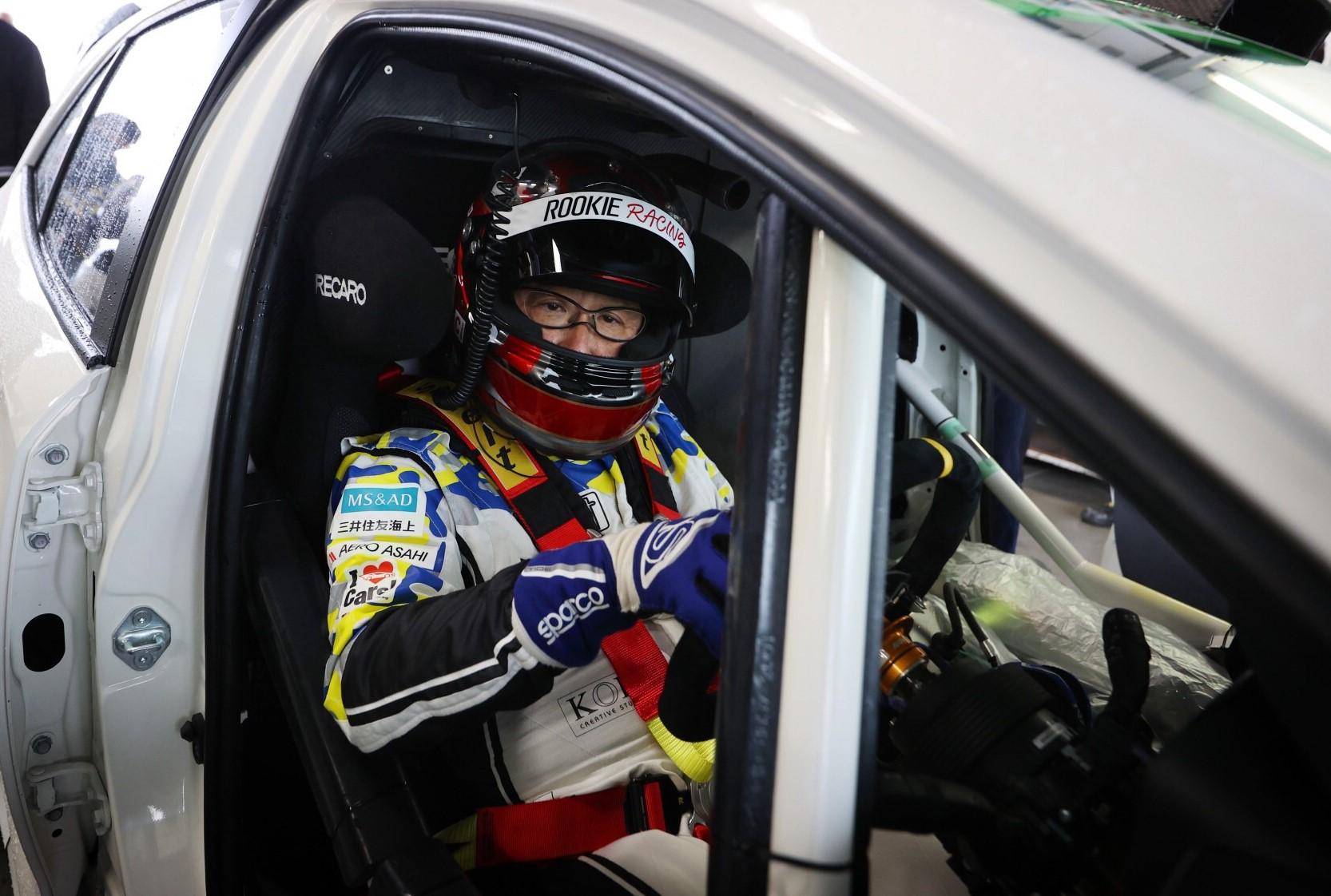
Morizo
I heard that hydrogen-powered engines produce a rather high-pitched sound, which made me feel that there is still room for us to find the true “hydrogen sound”. We’re going to be the first to do it. I want our team to define what that sounds like when people say: “Oh, that’s the sound of a hydrogen-powered engine.”
“Fun to drive” is something you can experience with all the senses. And now that we’ve built a new engine that aims for carbon neutrality with environment-friendly green hydrogen, I want to make sure that we get the essential car sounds right, from driving to turning and braking. Especially in a car made for motorsports.
Morizo shared these comments with Toyota Times while still in the driver’s seat with his helmet on, as the car was being refueled with hydrogen after a few laps on the track. More so than JAMA Chairman and Toyota President Akio Toyoda, this obsession with sound felt like the words of the petrolhead Morizo.
There is no doubt that the car’s participation in this race is aimed at helping our environment by speeding up progress towards the goal of carbon neutrality. At the same time, it is a test to see whether this can be achieved without compromising the way cars appeal to all the senses.
As the first step towards that goal, the four drivers who shared their comments with us will be joined by two more car guys – Takamitsu Matsui and Kamui Kobayashi – as they take on the 24-hour race.
[Driver team for the 24-hour race (alphabetical order)]
Takuto Iguchi
https://twitter.com/takuto_iguchi
https://www.instagram.com/takutoiguchi/
Hiroaki Ishiura
https://twitter.com/Hiroaki_Ishiura
https://www.instagram.com/hiroakiishiura/
Kamui Kobayashi
https://twitter.com/kamui_kobayashi
https://www.instagram.com/kamuikobayashi/
Masahiro Sasaki
https://twitter.com/masahiro_sa
https://www.instagram.com/masahiro716/?hl=en
Takamitsu Matsui
https://twitter.com/takamitsumatsui
https://www.instagram.com/taka3tsumatsui/
Morizo (Akio Toyoda)
https://www.instagram.com/akiotoyoda_official/
ROOKIE Racing

